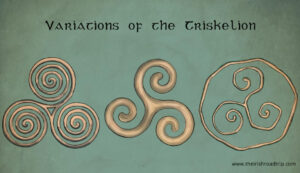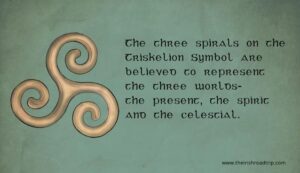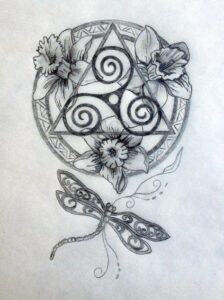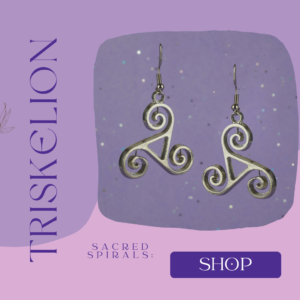Mystery and allure shroud the ancient triskelion symbol. This enigmatic emblem, prevalent in Celtic and other ancient cultures, holds a fascinating journey through history and meaning. Embark on an exploration of the triskelion’s origin, its evolution, and the profound symbolism it carries across different cultures.
The Origin and Evolution

The term triskelion, derived from the Greek ‘triskeles’, meaning ‘three-legged’, dates back to ancient civilizations. It often appears as a triple spiral, with three symmetrical spirals emanating from a central point. The oldest known triskelion traces back to the Neolithic era, gracing the entrance of Newgrange, Ireland, an ancient monumental structure. Over time, this symbol took root in various cultures, notably the Celtic, where it transformed into the Celtic triskele.
Meaning Through Time
Initially, the triskelion symbolized notions of movement and progress. The three spirals, or legs, in the 3 legged triskelion, suggest a dynamic energy, indicative of life’s constant motion. In Celtic culture, it assumed deeper connotations. The Celtic triskele often represented the triadic nature of life: birth, death, rebirth; past, present, future; and land, sea, sky. This symbolism imbued it with a spiritual significance, intertwining it with the cycle of life and nature’s rhythms.
Triskelion in Paganism

In paganism, the triskelion holds a revered place. It epitomizes the tripartite divisions that pagans see in the world around them. The triskele, in this context, becomes a symbol of the threefold nature of the goddess as maiden, mother, and crone. It encapsulates the essence of life cycles, the natural progression of time, and the sacred feminine principle.
Triskelion vs. Triskele
Often used interchangeably, triskelion and triskele share similar roots but bear nuanced differences. The triskelion typically refers to a broader range of three-legged symbols across various cultures. In contrast, the triskele or Celtic triskele often points specifically to the Celtic variation, with its distinct spiral design and deeper connotations in Celtic mythology and spirituality.
Celtic or Norse?

The debate over the triskelion’s origins often stirs curiosity: is it Celtic or Norse? The truth is, the triskelion transcends a single cultural origin. Its presence in both Celtic and Norse artifacts testifies to its widespread appeal in ancient Europe. While the Norse versions appear on runestones and in Viking artifacts, the Celtic iterations feature prominently in Irish and Breton art. This cross-cultural presence highlights the triskelion’s universal appeal and its ability to resonate across different beliefs and traditions.
The Triskelion in Modern Times
Today, this symbol continues to captivate. It finds new life in jewelry, such as the triskelion pendant, melding ancient symbolism with modern style. This enduring emblem serves as a bridge connecting us to our ancestral past, reminding us of the timeless truths and cycles of existence.
The triskelion, with its deep roots and widespread presence across cultures, stands as a testament to the enduring human quest for meaning and connection. It transcends mere art, embodying the dynamic essence of life, the cycles of nature, and the mystical journey of the human spirit. The symbol’s journey through time and culture invites us to delve deeper into our collective past, unraveling the mysteries of this ancient symbol.

